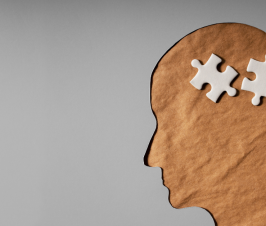A research group including Professor MATSUDA Tetsuya of Tamagawa University’s Brain Science Institute (Machida City, Tokyo; Director: SAKAGAMI Masamichi) and Assistant Professor ISHIHARA Toru from Kobe University’s Graduate School of Human Development and Environment has illuminated the changes in the brain’s neural network and cortex structure that underlie the positive association between childhood exercise and the maintenance and promotion of cognitive function in later life. These results were published in the academic journal Neuroimage.
Main Points
- The researchers showed that people who are physically active during childhood (up to 12 years of age) have higher cognitive functions in later life.
- However, they could not find a correlation between cognitive function and post-childhood physical activity.
- The positive association between childhood exercise and cognitive function was evident in the modular (*1) segregation of brain networks, strengthened inter-hemispheric connectivity, greater cortical thickness, lower levels of dendritic arborization and decreased density.
- During childhood, the formation of the brain’s network is susceptible to environmental and experience-related factors. It is thought that exercise during this period optimizes brain network development and is linked to the maintenance and promotion of cognitive function in later life.
Research Background
Research over the previous decade has shown that exercise during childhood affects the development of cognitive functions. Recent findings have indicated that these benefits of childhood exercise extend to the maintenance and promotion of cognitive functions in middle age and later life. However, the changes in brain functionality and structure related to this positive association have yet to be illuminated. This research study investigated the relationship between physical activity in childhood and cognitive function in later life, using MRI (magnetic resonance imaging) to illuminate the structural and functional changes in the brain that are behind this relationship.
Experiment Method
The research group conducted a study on 214 participants ranging in age from 26 to 69 in order to investigate the relationship between childhood exercise and cognitive function, and the underlying functional and structural neural networks and cortical structure. Childhood exercise was assessed via questionnaire. One aspect of cognitive function, response inhibition (the ability to suppress inappropriate behaviors), was measured using a Go/No-go task. The image data from the MRI was analyzed and the following were calculated: structural and functional connectivity (*2), cortical thickness, myelination, the degree of neurite orientation dispersion and density index. The brain was divided into 360 areas in accordance with the Human Connectome Project (*3), and functional and structural parameters were obtained for each area. In the statistical analysis, information obtained through the questionnaire was used as confounders. This included each participant’s educational background, parents’ educational background, number of siblings and exercise during adulthood.
Experiment Results
Firstly, the researchers analyzed the relationship between whether participants exercised during childhood and Go/No-go task performance (false alarm rate). They found that participants who exercised during childhood (up until age 12) had a lower false alarm rate than those who didn’t (Figure 1). Furthermore, this correlation was found regardless of the age of the participant. However, no such relationship was found between task performance and post-childhood exercise.
Next, the research group investigated structural and functional connectivity in the brain relating to Go/No-go task performance in participants who exercised during childhood. From these results, they confirmed that in terms of structural connectivity in the brain, there were positive associations (Figure 2A: connections indicated in red) and negative associations (Figure 2A: connections indicated in blue) between exercise during childhood and the false alarm rate in the Go/No-go task. Large-scale network connectivity was found in over half (73%) of structurally connected areas that were positively associated with the Go/No-go task false alarm rate (Figure 2B, left portion). On the other hand, inter-hemispheric connectivity was found in the majority (88%) of structurally connected areas that were negatively associated with the task’s false alarm rate (Figure 2B, right portion). In terms of connections between functional areas, connections showing positive associations (Figure 3A: connections indicated in red) with the Go/No-go task false alarm rate were identified in participants who exercised during childhood but no negatively associated connections were found. Furthermore, large-scale network connectivity was found in the majority (91%) of connected areas that were positively associated with the task’s false alarm rate (Figure 3B, left portion).
In those participants who did not exercise during childhood, there was no structural or functional connectivity identified in relation to the false alarm rate in the Go/No-go task. Lastly, the researchers investigated cortical structure parameters in relation to the Go/No-go false alarm rate for participants who exercised as children. They found that task performance was negatively associated with cortical density, and positively associated with the degree of neurite orientation dispersion and density.
The above results demonstrate that modular segregation and strengthened inter-hemispheric connections in the brain networks of people who exercised during childhood reduced the number of mistakes that they made in the Go/No-go task.
Glossary
1. Module: A single unit that combines with others to form the entire structure of a system. The human brain has a clear modular structure: it is divided into a number of large-scale networks made up of multiple areas.
2. Structural and Functional Connectivity: This refers to the structural and functional relationships between different areas of the brain. Structural connections between areas of the brain can be identified by anatomical nerve fiber connections, and functional connections are indicated by similarities in patterns of neural activity.
3. Human Connectome Project: This large scale research project began in North America in 2012 and aims to deepen understanding of brain connectivity.
1. Toru Ishihara, Atsushi Miyazaki, Hiroki Tanaka, Takayuki Fujii, Muneyoshi Takahashi, Kuniyuki Nishina, Kei Kanari, Haruto Takagishi, Tetsuya Matsuda. Childhood exercise predicts response inhibition in later life via changes in brain connectivity and structure. NeuroImage, 2021; 237: 118196 DOI: 10.1016/j.neuroimage.2021.118196

Razi Berry is the founder and publisher of the journal Naturopathic Doctor News & Review, which has been in print since 2005, and the premier consumer-faced website of naturopathic medicine, NaturalPath. She is the host of The Love is Medicine Project docuseries, The Natural Cancer Prevention Summit, The Heart Revolution-Heal, Empower and Follow Your Heart, and the popular 10-week Sugar Free Summer program. From a near death experience as a young girl that healed her failing heart, to later overcoming infertility and chronic fatigue syndrome and fibromyalgia through naturopathic medicine, Razi has lived the mind/body healing paradigm. Her projects uniquely capture the tradition and philosophy of naturopathy: The healing power of nature, the vital life force in every living thing and the undeniable role that science and mind/body medicine have in creating health and overcoming dis-ease. You can follow Razi on social media: Facebook at Razi Berry, Instagram at Razi.Berry and join the Love is Medicine group to explore the convergence of love and health. Look for more, and listen to more Love is Medicine podcast episodes here.

















